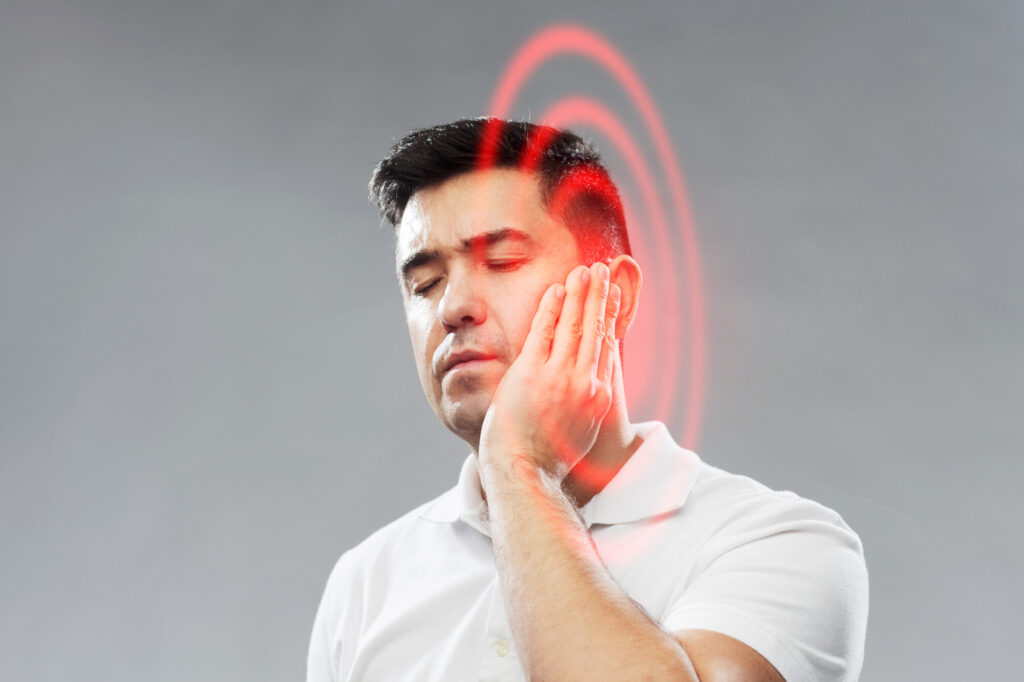A smile. A bite of your favorite food. A laugh that starts deep and takes over. These little moments should feel natural, effortless. But for many people, they come with sharp pain, strange sounds, or even locked jaws. If you’ve ever struggled to yawn without discomfort or to chew without clenching your teeth in frustration, you may be facing TMJ issues.
TMJ pain doesn’t just affect your jaw. It can touch everything-your head, neck, ears, even your mood. What once felt simple now takes effort. What once brought joy now brings tension.
But there’s hope. Relief is possible. The right care can bring back ease, movement, and peace of mind.
If you’re tired of fighting your jaw, keep reading. Let’s explore gentle, proven solutions that can ease the pressure and bring freedom back to your daily life.
Understanding TMJ and Where the Pain Comes From
TMJ stands for temporomandibular joint. This joint connects your jaw to your skull and allows you to speak, chew, and move your mouth in all directions. It works hard every single day, often without us noticing. Until something goes wrong.
The pain can come from many sources. It might be caused by teeth grinding at night. It could come from stress, arthritis, an injury, or even how your teeth align. For some people, it starts with a click or a pop. For others, it’s a dull ache that grows stronger with time.
Understanding what causes your TMJ pain is the first step toward finding relief. The body is always giving clues. Learning to read those signs is how healing begins.
Daily Habits That Could Make It Worse
Many people with TMJ problems don’t realize how their everyday habits might be adding to the pain. Sometimes it’s chewing gum too often. Other times it’s clenching your teeth while thinking hard or sleeping. Studies indicate that prolonged poor posture can indeed exacerbate TMJ discomfort.
Even emotional stress can tighten the jaw without you knowing. When the mind is tense, the body often follows.
Becoming aware of these habits is not about blaming yourself. It’s about giving yourself tools to change and improve. Small shifts in behavior can have a big impact over time.
Simple Exercises That Can Help
Movement can be healing. Just like stiff shoulders need to stretch, a tight jaw often needs gentle, regular motion. Specific TMJ exercises can help relax the muscles, restore balance, and reduce pain.
These exercises are easy to do at home. They may include slowly opening and closing your mouth, moving your jaw side to side, or holding your tongue in certain positions to guide proper motion.
It’s important to go slowly. TMJ pain often worsens with fast or forced movements. Patience is key. Over time, these stretches and motions can increase range and reduce tension.
Natural and At-Home Relief Options
Don’t wait until pain is severe to take action. There are ways to find relief right from the comfort of home.
A warm compress placed gently on the side of your face can soothe sore muscles and improve blood flow. A cold pack may reduce swelling or inflammation after a flare-up. Alternating between hot and cold may bring more comfort.
Soft foods can give your jaw a break. Instead of chewy or crunchy meals, focus on smoothies, soups, or mashed items during painful days.
Stress management also plays a powerful role. Breathing exercises, meditation, or calming walks can ease not only your mind but also your jaw muscles. The body is connected in more ways than we often notice.
Professional Help That Makes a Difference
When home care isn’t enough, professionals can step in with targeted support. Dentists, physical therapists, and other specialists offer treatments that go deeper than surface relief.
You may be guided through focused therapy designed to retrain how your jaw moves. This can include hands-on adjustments or the use of tools that relax muscle tension.
For some people, a mouthguard made just for them can help stop nighttime grinding. Others might benefit from working with a therapist who understands how stress affects the body and teaches ways to manage that pressure.
In some cases, medication may be used to reduce inflammation or pain. And when needed, advanced techniques like injections or dental work may be explored.
There are many TMJ treatment options available today. With the right guidance, you can find the one that fits your life, your pain level, and your personal goals.
Lifestyle Changes That Support Healing
Healing the jaw often means looking at the whole body. What you eat, how you sleep, and how you handle stress all play a role. Even small choices like drinking more water, getting enough rest, or stretching before bed can add up.
Sleep position can also matter. Try to avoid lying flat on your stomach or resting your jaw on your hand for long periods. Give your body the best chance to stay balanced and relaxed.
Staying active, even through gentle walks or yoga, supports overall muscle health. The better your body moves, the more your jaw benefits too.
Keep Listening to Your Body
TMJ pain rarely fixes itself overnight. It comes and goes. It teaches you when to rest and when to adjust. What works one week might need to shift the next.
This doesn’t mean you’re failing. It means you’re learning. The body is wise and always speaks through tightness, tension, and relief.
Track what helps. Notice when pain is worse. These patterns will help you understand what your jaw needs.
And remember, you’re not alone in this journey. Many have walked this path and found their way to ease. With time and care, you will too.
TMJ Pain Relief Solutions to Improve Daily Life
When your jaw is in pain, it feels like the world gets smaller. You speak less, chew less, and even laugh less. But that doesn’t have to last forever.
TMJ pain can be managed. Life can feel light again. With gentle steps, caring support, and the right knowledge, daily moments can return easily and pain-free.
So take a deep breath. Let your body rest. Trust that relief is possible and already beginning. The freedom to smile without fear is closer than you think.
For more on this content, visit the rest of our blog!






